 Tucked among the verdant hills of Colombia's Coffee Triangle or eje cafetero region, Salento is a colorful town that attracts locals and travelers. These structures are built from native bamboo, a material that's well suited for this earthquake-prone region.
Tucked among the verdant hills of Colombia's Coffee Triangle or eje cafetero region, Salento is a colorful town that attracts locals and travelers. These structures are built from native bamboo, a material that's well suited for this earthquake-prone region. 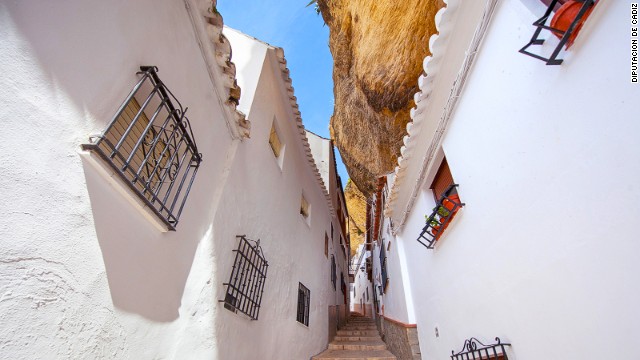 Dating back to Medieval times, the whitewashed village of Setenil de las Bodegas, Spain, uses the open space that already exists. Its buildings were constructed outward and often upward from there.
Dating back to Medieval times, the whitewashed village of Setenil de las Bodegas, Spain, uses the open space that already exists. Its buildings were constructed outward and often upward from there.  "The architectural style of the local houses has not been changed since the founding of the village (in the 17th century) and the only materials used are stone and wood," says Pavel Gospodinov, who runs photo walks and tours to Kovachevitsa, Bulgaria.
"The architectural style of the local houses has not been changed since the founding of the village (in the 17th century) and the only materials used are stone and wood," says Pavel Gospodinov, who runs photo walks and tours to Kovachevitsa, Bulgaria.  Located in the Japanese Alps, the once-isolated, rural mountain villages of Shirakawa-gō and Gokayama both sport a unique style of Japanese vernacular architecture known as Gasshō-zukuri -- distinct for their thatched, steeply slanting roofs resembling two hands in prayer.
Located in the Japanese Alps, the once-isolated, rural mountain villages of Shirakawa-gō and Gokayama both sport a unique style of Japanese vernacular architecture known as Gasshō-zukuri -- distinct for their thatched, steeply slanting roofs resembling two hands in prayer. 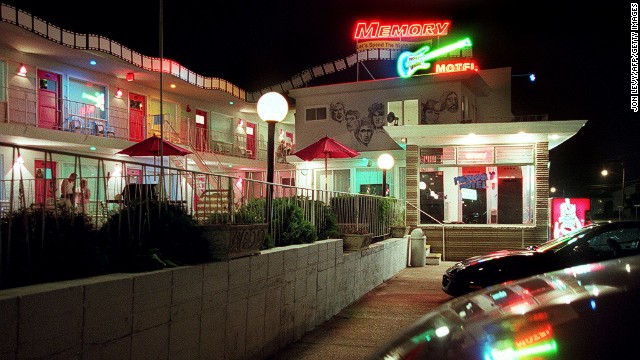 The motel boom of New Jersey's Wildwoods began in the 1950s. To differentiate lodgings, owners added flashy neon signs, bold colors, curved balconies and kidney-shaped pools, along with names evoking exotic and faraway locales like the Tahiti, Satellite and Eden Roc.
The motel boom of New Jersey's Wildwoods began in the 1950s. To differentiate lodgings, owners added flashy neon signs, bold colors, curved balconies and kidney-shaped pools, along with names evoking exotic and faraway locales like the Tahiti, Satellite and Eden Roc. 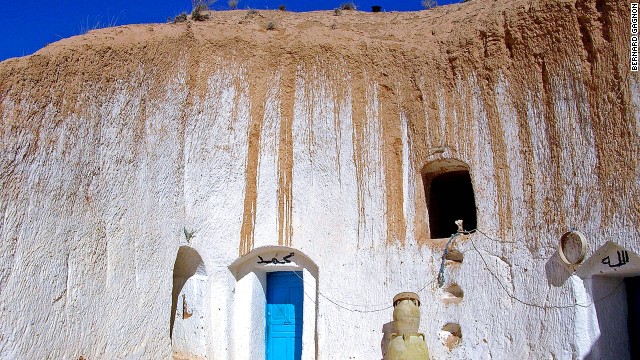 Star Wars fans might recognize Matmata, Tunisia, as the home of Luke Skywalker. The town's distinct architecture makes it seem otherworldly.
Star Wars fans might recognize Matmata, Tunisia, as the home of Luke Skywalker. The town's distinct architecture makes it seem otherworldly. !["Since the area (Taketomi Village in Japan) is often hit by typhoons and strong winds there's a need for protection," says Okinawa Tourism Board's Kazuya Oshiro. "This includes the limestone walls that surround the houses, [the planting of] garchinia trees to act as windbreakers, and tile-roofs -- which replace the older, more vulnerable thatched-roofs."](http://ift.tt/1CLmYhy) "Since the area (Taketomi Village in Japan) is often hit by typhoons and strong winds there's a need for protection," says Okinawa Tourism Board's Kazuya Oshiro. "This includes the limestone walls that surround the houses, [the planting of] garchinia trees to act as windbreakers, and tile-roofs -- which replace the older, more vulnerable thatched-roofs."
"Since the area (Taketomi Village in Japan) is often hit by typhoons and strong winds there's a need for protection," says Okinawa Tourism Board's Kazuya Oshiro. "This includes the limestone walls that surround the houses, [the planting of] garchinia trees to act as windbreakers, and tile-roofs -- which replace the older, more vulnerable thatched-roofs." Alberobello in Italy has more than 1,500 trullis -- limestone dwellings capped by conical roofs that resemble beehives. 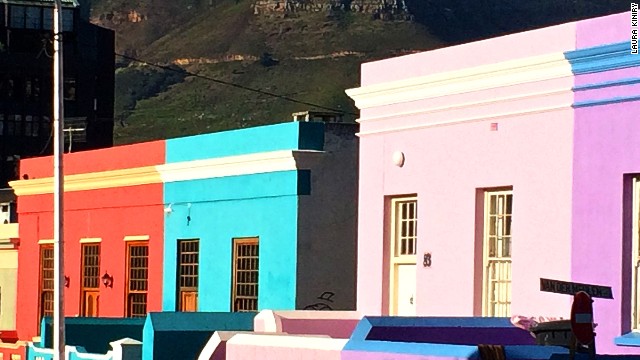 South Africa's Bo-Kaap is best known for its colorful homes, painted everything from lime green to bright pink. They first came about in the 1980s and early 1990s -- a symbol of free expression at the height of the anti-apartheid movement.
South Africa's Bo-Kaap is best known for its colorful homes, painted everything from lime green to bright pink. They first came about in the 1980s and early 1990s -- a symbol of free expression at the height of the anti-apartheid movement. 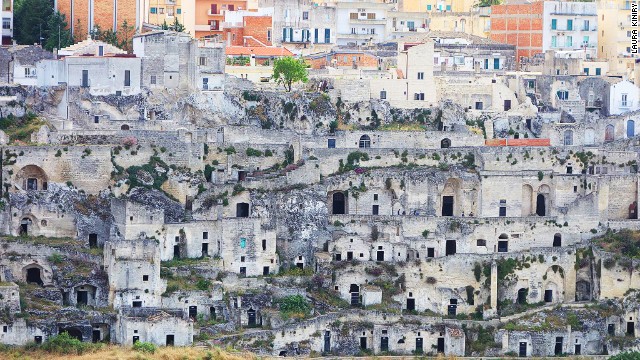 Matera in Italy has become a favorite Hollywood stand-in for ancient Jerusalem. Situated along a ravine known as "La Gravina," Matera is best known for its "sassi," ancient cave dwellings in the city's old town that date back to the 3rd century BC.
Matera in Italy has become a favorite Hollywood stand-in for ancient Jerusalem. Situated along a ravine known as "La Gravina," Matera is best known for its "sassi," ancient cave dwellings in the city's old town that date back to the 3rd century BC.
- Cave dwellings in Matera are believed to be some of Italy's first settlements
- Japan's Taketomi Village uses limestone walls and garcinia trees as windbreakers
- Matmata in Tunisia was Luke Skywalker's home in 2002 Star Wars prequel
(CNN) -- While plenty of cities throughout the world are renowned for their architecture, there are just as many towns, villages and neighborhoods with incredibly unique structures.
Here are 10 such places to put on your must-see list.
Alberobello, Italy
Situated in southern Italy's Puglia region, Alberobello is best known for its trullo structures: hundreds of whitewashed, limestone dwellings capped by conical roofs that resemble beehives.
"Trullis date back to the 13th century," says Antonello Losito, owner of Puglia's Southern Vision Travel company, "and they're unique to the area."
According to Losito, Alberobello has more than 1,500 of them.
While many are still inhabited, others have been converted into restaurants, shops and cafes.
"Trullis came about as a way to avoid paying house taxes," he says.
In fact, the homes could be both easily dismantled so the families occupying them could destroy then rebuild them elsewhere at a moment's notice.
Alberobello wasn't actually declared an "inhabited settlement" until 1797. It became a UNESCO World Heritage Site in 1996.
Highlights
Losito says the town's popularity can sometimes make the foot traffic overwhelming.
To avoid the crowds (and score great pics) he suggests exploring Alberobello at sunrise when its many cone-shaped structures "resemble a Hobbit's paradise."
Other tips include stopping by the Thursday produce market in the town's Rione Monti, or historic district; or enrolling in one of Southern Visions week-long culinary adventures, which take place at a trullo farmhouse two miles outside of town.
MORE: 10 things Italy does better than anywhere else
Natural constructions help protect against natural events.
Taketomi Village, Japan
Located on the tiny island of Taketomi in Japan's Okinawa prefecture, Taketomi Village is a modernized example of traditional Ryuku architecture -- a style prevalent in the storm-prone Okinawan islands, which were once ruled by the independent Ryukyu Kingdom.
The entire village consists of attractive, single-story stone structures, each with a red-tiled roof and many with low-lying stone fences.
"The residents built this type of home to both cooperate and co-exist with nature," says Okinawa Tourism Board's Kazuya Oshiro.
"Since the area is often hit by typhoons and strong winds there's a need for protection. This includes the limestone walls that surround the houses, [the planting of] garcinia trees to act as windbreakers and tile-roofs -- which replace the older, more vulnerable thatched roofs -- that are made with red lacquer that's more durable to heat, humidity and natural disasters."
Another feature that's unique to Okinawa and extremely common in Taketomi Village are the lion-like shisha statues placed on rooftops to ward off evil spirits.
Highlights
Everything about the village -- the roadways filled with sand, transport wagons pulled by water buffalo -- feels like a step back in time.
Visitors can take a 30-minute tour of the island on one of the buffalo-drawn carts, which also includes a musical sanshin (an Okinawan stringed instrument) performance by your guide.
Taketomi Island is small: a short walk or bicycle ride from the village brings you to Kaiji Beach, renowned for its tiny particles of sand that resemble stars.
The island (and village) is accessible by boat from nearby Ishigaki Island.
Bo-Kaap, South Africa
While the vibrant colors of Cape Town's Bo-Kaap neighborhood only date back a few decades, the homes themselves have been around centuries.
Located on the lower slope of the city's Signal Hill, Bo-Kaap is part of a larger area formerly known as the the Malay Quarter -- the historic center of Cape Malay culture, whose ancestry includes Southeast Asians and Javanese.
Today Bo-Kaap is best known for its colored homes -- painted everything from lime green to bright pink and reddish-orange -- that line its brick sidewalks.
They first came about in the 1980s or early 1990s: a symbol of free expression at the height of the anti-apartheid movement.
"After one person painted their house the whole community followed suit, trying to out do one another," says Shaheed Ebrahim, founder of the South Africa-based Escape to the Cape sightseeing tours.
"Generally, every year those who can afford it paint their houses in celebration of Eid al-Fitr (end of the holy Muslim month of Ramadan). This gives them an opportunity to spruce up their abode inside and outside making it looking like new."
Though some areas of the neighborhood such as Rose Street have gone through gentrification -- with foreigners transforming the former homes into boutique hotels and cafes -- for the most part Bo-Kaap remains a close-knit community of local descendants.
"The architecture of the homes hasn't changed from the time the Dutch East India Company built these houses for their slaves," says Ebrahim.
Highlights
Bo-Kaap is home to what's believed to be South Africa's oldest mosque, the Aural Mosque, built in 1798. Ebrahim suggests a visit to the neighborhood's Bo-Kaap Museum, which tells the history of the community and its Muslim heritage, as well as Atlas Trading Co. -- an Indian spice shop on Wale Street that's been in business since 1946.
Matera, Italy
Matera has become a favorite Hollywood stand-in for ancient Jerusalem and one walk around the multi-tiered city is enough to see why.
Situated along a ravine known as "La Gravina," Matera is best known for its "sassi" -- ancient cave dwellings in the city's old town that date back to the 3rd century.
In fact, the Sassi di Matera are believed to be some of Italy's first human settlements.
"What makes Matera's architecture especially unique is the size and complexity of this rupestral or 'composed of rock' old city," says Tonio Creanza, founder of Messors, a local organization offering workshops in art restoration and rupestral reconstruction.
"This phenomenon is due to the huge amount of natural tufa bedrock available on the edge of the ravine."
People began inhabiting the caves, he says, in their natural states, eventually carving into them to enlarge their space and extracting that rock to build onto the caves' exteriors.
"This results in the odd, almost shocking look of the sassi: a mix of negative (carving) and positive (building) architecture that contrast one another in their approach and technique."
Creanza said that at one point Matera had more cave dwellers than anywhere else in the world, until 1954 when the Italian government forced residents out due to the homes' poor conditions and the lack of running water and sewer systems.
While many of the caves are uninhabited, residents have since been allowed to return and today Matera is one of southern Italy's main tourism draws as well as an UNESCO World Heritage Site.
Highlights
Visitors can spend a night at Sextantio, a stunning boutique hotel occupying a series of former caves; take a guided walking tour of the sassi with Matera Tour Guide; or stop for a lunch of locally made cheese, meats and focaccia bread at Panelist.
Where whitewash means something desirable.
Setenil de las Bodegas, Spain
The true beauty of Setenil de las Bodegas, or Setenil as it's known, is the innovative use of both natural elements and space.
Built partially beneath the overhang of an eroded gorge along southern Spain's Rio Trejo, this small, whitewashed village dates back to Medieval times.
The homes themselves simply utilize the open space that already exists and are built outward and often upward from there -- a unique blend of human construction and Mother Nature.
It's a multi-layered place; homes were constructed both on the rocks and inside.
Highlights
Inmaculada Olivero, head of tourism in Spain's Cadiz region, recommends a visit to the town's Medieval fortress known as Nazari Castle, built by the Moors in the 13th century; or if you're in the area on January 20, you can take part in the festival of the town's patron saint, St. Sebastian.
Calle de las Cuevas de la Sombra and Calle de las Cuevas del Sol are two of Setenil's most picturesque streets.
Salento, Colombia
Tucked among the verdant hills of Colombia's Coffee Triangle or eje cafetero region, Salento is a colorful town that attracts locals and travelers.
The town's biggest attraction is its traditional bahareque architecture: a collection of one- and two-story buildings, mostly white but with doors and window frames adorned in brightly painted colors.
These structures are built from native bamboo, a material that's well suited for this earthquake-prone region.
"Visiting Salento is like traveling back in time," says Alexander Rodriguez Arcila, a guide for local tour organizer and operator Colombia 57.
"The town has preserved the architectural styles that originated during the period of colonization 200 years ago and combined them with beautiful colors.
"Along with this you've got the perfect location in the Colombian Andes with the Cocora Valley just a few miles away where you can see the national tree (wax palm) and eat the best trout in your life."
Highlights
Calle Real, aka Royal Road, offers a beautiful stroll through a colorful thoroughfare lined with restaurants and trinket shops that leads from Salento's main square, Plaza Bolivar, to a lookout point called Alto de la Cruz.
Café Jesús Martín offers an incredible cup of joe.
Shirakawa-gō and Gokayama, Japan
Located in the Japanese Alps, the once-isolated rural mountain villages of Shirakawa-gō and Gokayama both sport a unique style of Japanese vernacular architecture known as Gasshō-zukuri -- distinct for their thatched, steeply slanting roofs resembling two hands in prayer.
"These thatched-roof houses are precious examples of an old farmhouse style that exist only in Gokayama and Shirakawa-go in Japan today," says Yukie Yamazaki of Gokayama Tourism.
"The design is very rational, with a robust architectural structure that can endure this deep-snow region's harsh climate."
Yamazaki says that most of Gokayama's homes -- large, multi-story farmhouses built to house large families and/or be used as live/work spaces -- are between 100 to 200 years old, with some built as many as 400 years ago.
UNESCO gave them World Heritage status -- along with the gasshō-style homes of Shirakawa-gō -- in 1995.
"The roofs in particular help residents deal with the region's harsh weather," says Mitsunari Shirokio of Shirakawa Village tourism.
"If the roof is steep, the snow will fall off easily."
Shirokio says that beyond winter, these roofs offered plenty of work space for silk cultivation.
"At one time silk cultivation was the main industry in our village. Creating a large space also helped house a large number of families together for the industry's labor force.
"Thus, this architecture mirrors the culture of our village."
Highlights
Shirokio says one of the best times to visit Shirakawa-gō is during the village's winter Light Up, when the homes are softly illuminated with floodlights and covered in snow.
There are also several good guesthouses to stay in, including Shirakawa-gō's gasshō-style Magoemon and Gokayama's Nanto.
The only materials used are stone and wood.
Kovachevitsa, Bulgaria
Established in the 17th century on an isolated slope of the Rhodope mountains, Kovachevitsa is known for its unique two- and three-story homes built to house families in protruding levels up top and farm animals below.
According to Pavel Gospodinov, who runs photo walks and tours to the village, "the architectural style of the local houses has not been changed since the founding of the village and the only materials used are stone and wood."
Today there are about 50 permanent residents as well as a number of B&Bs situated along the mountain village's steep and narrow cobbled streets.
Highlights
The village church of St. Nikolas was built in 1847 (if it's locked, a local may be able to let you in), and is surrounded by hiking trails.
For an overnight stay, Lavanda Bed & Breakfast has cozy rooms and homemade breakfast that includes mekitsi, a traditional fried Bulgarian sweet bread.
Wildwood, New Jersey
The motel boom of New Jersey's Wildwoods began in the 1950s, when car travel took off and, for many Americans, bigger was better.
Easily accessible lodgings catering to the region's growing tourist trade were built at breakneck speed.
To differentiate lodgings, owners added flashy neon signs, bold colors, curved balconies and kidney-shaped pools, along with names evoking exotic and faraway locales like the Tahiti, Satellite and Eden Roc.
When the resorts' popularity began to wane during the 1970s gas crisis, their commercial architecture remained exquisitely intact.
Today, a large -- though dwindling -- number of these structures affectionately dubbed "Doo Wop" architecture still remain and are easy to spot, especially during summer.
Just look for the plastic palm trees.
Highlights
The Wildwood-by-the-Sea Doo Wop Experience is an interactive museum with vintage furnishings, local Doo Wop artifacts and a neon garden of restored signs from classic Wildwood motels.
For an authentic Doo Wop experience, spend a night at the refurbished Caribbean Motel, now listed on the National Register of Historic Places.
Matmata, Tunisia
Star Wars fans might recognize Matmata, Tunisia, as the home of Luke Skywalker, a role that director George Lucas reprized for the unique Berber town in the 2002 movie prequel, "Star Wars Episode II: Attack of the Clones."
In fact, it's the town's distinct architecture that makes it seem otherworldly.
Matmata is known for its unusual "troglodyte" or cave homes that are dug vertically into the ground.
Each troglodyte home begins with a large circular crater that's dug about two stories deep and serves as a courtyard. Artificial, windowless caves act as rooms off the sides of it.
This style of home helps protect against heat, although the secluded mountain town features traditional homes as well.
Highlights
The best way to avoid the crowds and heat is to spend a night in Matmata and explore early. The town's Hotel Sidi Driss, nicknamed "The Star Wars hotel," served as Luke Skywalker's actual home and still displays many of the original set pieces that were left behind.
Laura Kiniry is a freelance travel writer based in San Francisco.